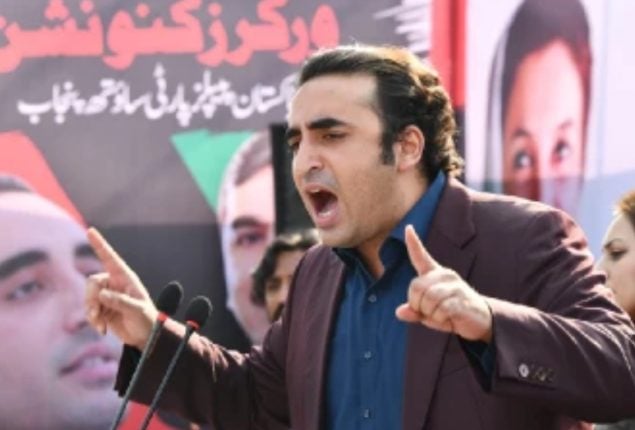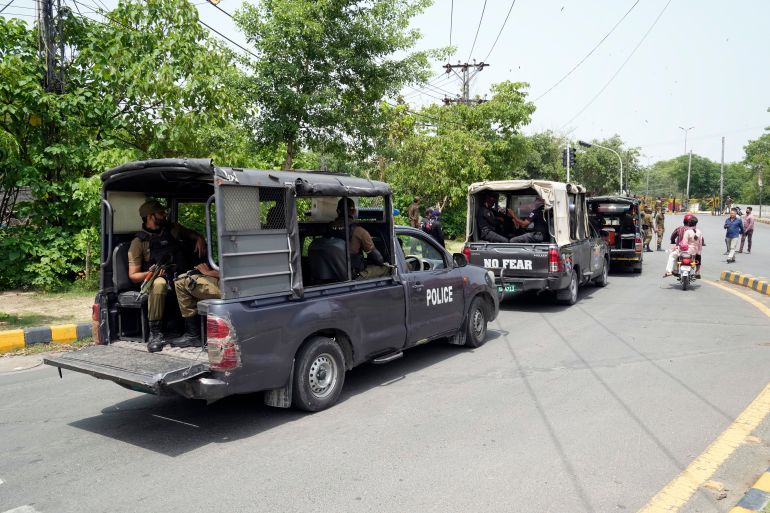You are using an out of date browser. It may not display this or other websites correctly.
You should upgrade or use an alternative browser.
You should upgrade or use an alternative browser.
"Hindu terrorism will wipe Pakistan off the map of the world" India's future Prime Minister Nirendra
- Thread starter alimohsan52
- Start date
Pakistan1992
Chief Minister (5k+ posts)
[hilar][hilar]
modern.fakir
Chief Minister (5k+ posts)
This is the message from the peace loving indians and future prime minister and the ones who claim that they have never attacked a country except in East Pakistan and then Pakistan 2 times [hilar][hilar][hilar]
Can lies be spared in any matter involving INdia ?? [hilar][hilar][hilar]
Can lies be spared in any matter involving INdia ?? [hilar][hilar][hilar]
Vajpai, a BJP PM came to Pakistan and genuinely wanted to address the issues between Pakistan and India. What BJP does in its home-turf is none of our business and if Modi becomes PM his statements will change. Pakistan's future lies in a functional democracy and we should allow anything which disrupts this process of democracy. Anyone who supports a coup and is looking for an excuse is the real enemy of Pakistan.
Ali.Pakistani
Senator (1k+ posts)
Two words for Jamadaar Nirendra Modi
Who Cares
Who Cares
concern_paki
Chief Minister (5k+ posts)
hindu piggy....narendara moodi...bhadwa saala ....suwar
Fakhre Alam
Minister (2k+ posts)
Last edited by a moderator:
aamir_uetn
Prime Minister (20k+ posts)
اگر انڈیا ، امریکا اور اسرائیل کی اتنی اوقات ہوتی تو پاکستان کب کا ختم ہو چکا ہوتا
alimohsan52
Chief Minister (5k+ posts)
It is very clear that Pakistan is a tool used by the BJP in their elections to gain support with the public
M Ali Khan
Minister (2k+ posts)
It is very clear that Pakistan is a tool used by the BJP in their elections to gain support with the public
and funny enough, BJP governments under Vajpayee were very pro-active in peace talks with Pakistan.
why else would Vajpayee travel all the way to Lahore on bus and speak at Minar-e-Pakistan and say that we ACCEPT Pakistan as an independent sovereign state?

http://expressindia.indianexpress.com/news/ie/daily/19990222/ige22062.html
Monday, February 22, 1999
The symbol of Pakistan
[SIZE=-1] Pamela Philipose[/SIZE]
Shaken by the disturbances created by the Jamaat-e-Islami in Lahore on Saturday, the Pakistani authorities decided not to take any chances and preferred to transport Prime Minister Atal Behari Vajpayee by helicopter on Sunday morning to the monument that most symbolises post-Partition Pakistan -- Minar-e-Pakistan. He is staying at the Governor's House, barely three kilometres away by road!
As the green-and-white flags, bearing the crescent and star, that ring the monument, fluttered in the late-winter breeze, Vajpayee, accompanied by his adopted daughter and granddaughter, went around the monument and read the legend on it bearing the Lahore Resolution, that decreed the Muslim League's commitment to the state of Pakistan.
The minar marks the place where the All India Muslim League took the historic resolution for the creation of a country for Muslims in the subcontinent on March 23, 1940. Among other things it states: ``This session of the Muslim League emphatically reiterates that the scheme of federationembodied in the Government of India Act, 1935, is totally unsuitable, and unworkable in the peculiar conditions of this country and is altogether unacceptable to Muslim India.''
Writing in the visitor's book at the monument, Vajpayee reiterated the ``deep desire for lasting peace and friendship'' that the people of India bear. ``A stable, secure and prosperous Pakistan is in India's interest. Let no one in Pakistan be in doubt. India sincerely wishes Pakistan well.''
The visit to this monument has proved somewhat controversial as Vajpayee himself revealed in the evening while addressing a civic reception thrown in his honour by the mayor of Lahore, Khwaja Ihsan Ahmed. Some advised him against going to the minar because it would amount to putting a seal of approval on Pakistan's existence. "As if Pakistan exists because of my seal of approval," said Vajapayee.
The Minar-e-Pakistan, set like a needle wrought out of white marble in the heart of Lahore, stands 196 ft tall, and is very close to some ofLahore's most ancient heritage sites, like the Lahore Fort, the Dera Sahib Gurudwara and the Shahi Masjid. It was built by Field Marshal Ayub Khan. Begun in 1960, it took eight years to build.
Later in a brief chat with journalists, Vajpayee termed the first ever bus service between the two countries that he inaugurated as ``a good beginning, Lahore bus yatra jari rahegi (the bus service will continue)''. When asked about his reaction to the demonstration against his visit by the hardline Jamat-e-Islami, Vajpayee quipped in his inimitable style ``kuch to hona tha, kuch hua'' (something was bound to happen, it happened).
Dinner diplomacy
Diplomacy through the dining table is today an important and intrinsic part of any negotiations. The banquet that Pakistan Prime Minister hosted for the visiting Indian premier had flavours from both traditional Punjab and Kashmir.
Besides the mandatory soup, there was siri pai, makai ki roti, saag, karhi chawal, chicken karahi. No proper banquet in theseparts can be complete without various kababs, including the succulent seekh kabab. Among the deserts, were gajjar halwa -- which is a constant on the menu on the Indian side of the border as well -- and petha ka halwa.
It was duly noted in the Pakistani press, that the Indian delegation seemed to prefer vegetarian dishes.
Copyright 1999 Indian Express Newspapers (Bombay) Ltd.
we should stay on guard on the noora kushti on LoC and not be provoked by mindless war hysteria.
war is something neither side can afford.
BJP will win the elections in 2014 and this hysteria will die down. mark my words.
Last edited:
alimohsan52
Chief Minister (5k+ posts)
and funny enough, BJP governments under Vajpayee were very pro-active in peace talks with Pakistan.
why else would Vajpayee travel all the way to Lahore on bus and speak at Minar-e-Pakistan and say that we ACCEPT Pakistan as an independent sovereign state?

we should stay on guard on the noora kushti on LoC and not be provoked by mindless war hysteria.
war is something neither side can afford.
I think you are comparing two totally different personalities, Modi has a history of killing Muslims and this speech of his was aired by a British channel as part of the Gujarat riots, where he attempted to implicate Pakistan's role in those riots. Whereas, I cannot recall Vajpayee ever having a history of killing Muslims.
Last edited:
alimohsan52
Chief Minister (5k+ posts)
This is the message from the peace loving indians and future prime minister and the ones who claim that they have never attacked a country except in East Pakistan and then Pakistan 2 times [hilar][hilar][hilar]
Can lies be spared in any matter involving INdia ?? [hilar][hilar][hilar]
I think Pakistan does need to take appropriate security measures, clearly this person and his gang are a huge threat, and if he is elected than that will spell a bigger hurdle for Pakistan.
M Ali Khan
Minister (2k+ posts)
I think you are comparing two totally different personalities, Modi has a history of killing Muslims and this speech of his was aired by a British channel as part of the Gujarat riots, where he attempted to implicate Pakistan's role in those riots. Whereas, I cannot recall ever Vajpayee ever having a history of killing Muslims.
Vajpayee maybe not, but LK Advani and other senior BJP leadership in the Babri Masjid riots of the early 1990s. They certainly did not stop Vajpayee's peace overtures with Pakistan.
The Gujarat massacres will forever remain a big black mark on Modi's failure to stop (and colluding in) the anti-Muslim violence.
however, at the same time he has made Gujarat as among the most developed economies in India. He has been clever to use Gujarati business potential to its full mark and the amount of investment and development his state has seen under his tenure is unmatched compared with rest of India.
but here is the thing, you can do things and largely get away with it as a local leader. Modi did not have to deal with Kashmir or China or Pakistan etc in Gujarat. But when and if he becomes PM, he will have to deal with these matters and he knows he cannot be reckless and stupid. The constrains and risks are too much for him to continue any recklessness he did as CM Gujarat.
you will see a significant change when if and when he gets into power as Indian PM.
alimohsan52
Chief Minister (5k+ posts)
Vajpayee maybe not, but LK Advani and other senior BJP leadership in the Babri Masjid riots of the early 1990s. They certainly did not stop Vajpayee's peace overtures with Pakistan.
The Gujarat massacres will forever remain a big black mark on Modi's failure to stop (and colluding in) the anti-Muslim violence.
however, at the same time he has made Gujarat as among the most developed economies in India. He has been clever to use Gujarati business potential to its full mark and the amount of investment and development his state has seen under his tenure is unmatched compared with rest of India.
but here is the thing, you can do things and largely get away with it as a local leader. Modi did not have to deal with Kashmir or China or Pakistan etc in Gujarat. But when and if he becomes PM, he will have to deal with these matters and he knows he cannot be reckless and stupid. The constrains and risks are too much for him to continue any recklessness he did as CM Gujarat.
you will see a significant change when if and when he gets into power as Indian PM.
Okay we will wait and see.
At the moment all I am seeing is Indians from all walks of life engaging in Pakistan bashing and wanting to teach Pakistan a lesson by launching a strike.
M Ali Khan
Minister (2k+ posts)
Okay we will wait and see.
At the moment all I am seeing is Indians from all walks of life engaging in Pakistan bashing and wanting to teach Pakistan a lesson by launching a strike.
and we'd be wise enough to maintain our guard but not reduce ourselves to becoming warmongering clowns like our adversaries.
© Copyrights 2008 - 2025 Siasat.pk - All Rights Reserved. Privacy Policy | Disclaimer|































